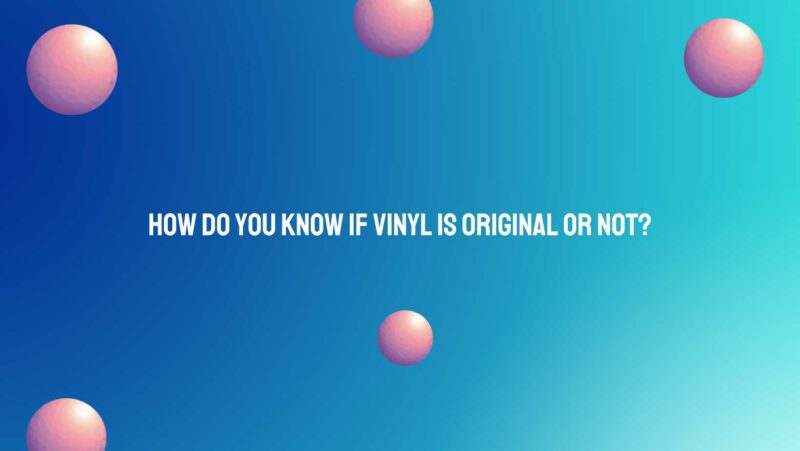In the world of vinyl records, discerning whether a record is original or not can be a crucial factor for collectors and enthusiasts. Original vinyl records often hold historical, cultural, and monetary value, making it essential to be able to distinguish them from reissues or counterfeit copies. In this comprehensive article, we will explore various methods and techniques to help you determine whether a vinyl record is original or a reproduction.
- Research the Release History
Before diving into the physical characteristics of a vinyl record, it’s essential to start your investigation by researching the release history of the album or single in question. Consult reputable sources such as discography databases, collector forums, and record label archives to gather information about the different editions and pressings of the record.
Original records are typically associated with specific release details, including catalog numbers, label variations, and release dates. Compare this information with what you have on hand to confirm its originality.
- Examine the Label and Cover
The label and cover of a vinyl record often provide vital clues about its authenticity:
a. Label Design: Original records usually feature labels with the design and layout used during the initial release. Be familiar with the label’s logo, typography, and color scheme for the particular release.
b. Catalog Number: Check the catalog number on the label against known references. Original pressings often have unique catalog numbers that distinguish them from reissues.
c. Cover Artwork: Inspect the artwork on the album cover, including the size and placement of text and images. Differences in cover artwork can indicate a reissue.
- Analyze the Matrix Numbers and Runout Groove
Matrix numbers or etchings on the runout groove area are a significant indicator of vinyl record authenticity:
a. Matrix Numbers: Original records typically have matrix numbers etched into the runout groove that correspond to the specific pressing or edition. Cross-reference these numbers with authoritative sources to verify their authenticity.
b. Handwritten Etchings: Some original records may feature handwritten etchings or inscriptions by mastering engineers, pressing plant employees, or artists. These can be strong indicators of authenticity.
- Inspect the Vinyl’s Weight and Color
Original vinyl records are often made with specific materials, resulting in distinct weight and color characteristics:
a. Weight: Original records are typically heavier than reissues or counterfeit copies due to the quality of materials used. Hold the record in your hand and compare its weight to known authentic records.
b. Color: Most vinyl records are black, but some may have unique color variations. Be cautious if the color appears different from what is commonly associated with the release.
- Scrutinize the Grooves
Examine the grooves on the vinyl record for signs of authenticity:
a. Groove Depth: Original records generally have consistent groove depth and spacing throughout the entire side. Counterfeit or reissued records may have irregularities in the groove patterns.
b. Surface Quality: Authentic records typically have a smooth, uniform surface. Counterfeits may display imperfections, visible seams, or signs of poor manufacturing.
- Listen to the Sound
The sound quality of a vinyl record can be a significant indicator of its authenticity. Original records often provide superior audio quality due to the use of high-quality materials and mastering processes. Play the record on a quality turntable with a good stylus and listen for any unusual pops, clicks, or distortions that are not present on genuine records.
- Seek Expert Advice
If you are uncertain about the authenticity of a vinyl record, consider reaching out to experts or experienced collectors. They may have in-depth knowledge and the experience to help you identify original records, especially for rare or obscure releases.
Conclusion
Identifying whether a vinyl record is original or not requires a combination of careful research, meticulous examination of physical attributes, and an ear attuned to audio quality. By delving into the release history, scrutinizing labels, covers, matrix numbers, and grooves, as well as seeking expert guidance when needed, you can confidently determine the authenticity of vinyl records in your collection. Whether you are a seasoned collector or a newcomer to the world of vinyl, this guide will help you navigate the intricate process of identifying original records and preserving their historical and cultural significance.


